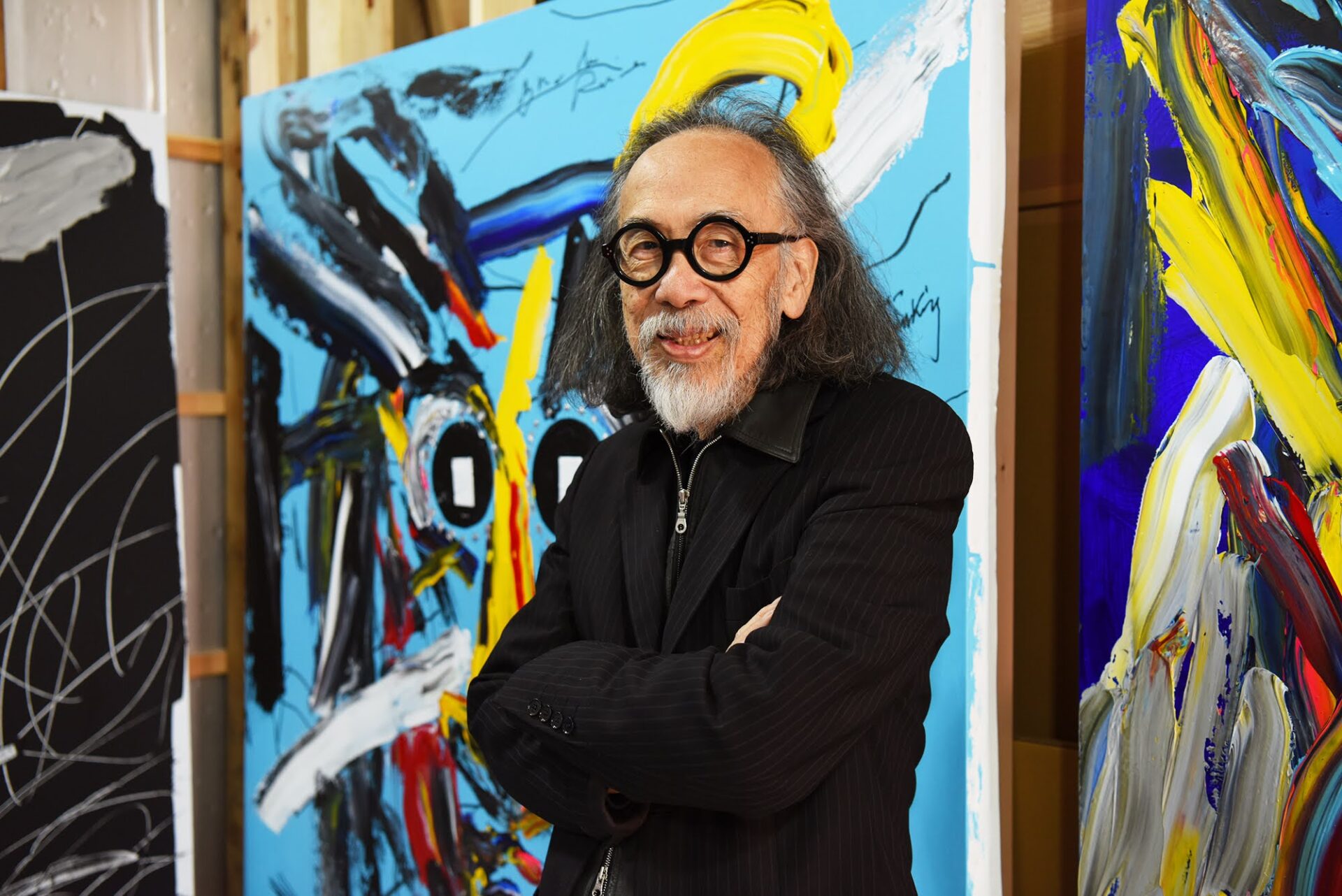Aki Kuroda is a master contemporary artist who has been based in Paris, France for the last half century. His works have appeared worldwide and at the forefront of the art world.
His work first gained recognition in 1980 at the age of 36 when he exhibited his art at the Biennale de Paris. After winning a contract with Galerie Maeght, a respected gallery that leads the European art scene, his name became known around the world.
He held his first solo exhibition in Japan in 1993 at the National Museum of Modern Art in Tokyo and was the youngest artist of the time to do so. In 2020, he was recognized by Kyoto City as a person of Cultural Merits for his achievements and works in the field of contemporary art in Japan and abroad.
At 78 years of age, Kuroda continues to exhibit his work with vigor.
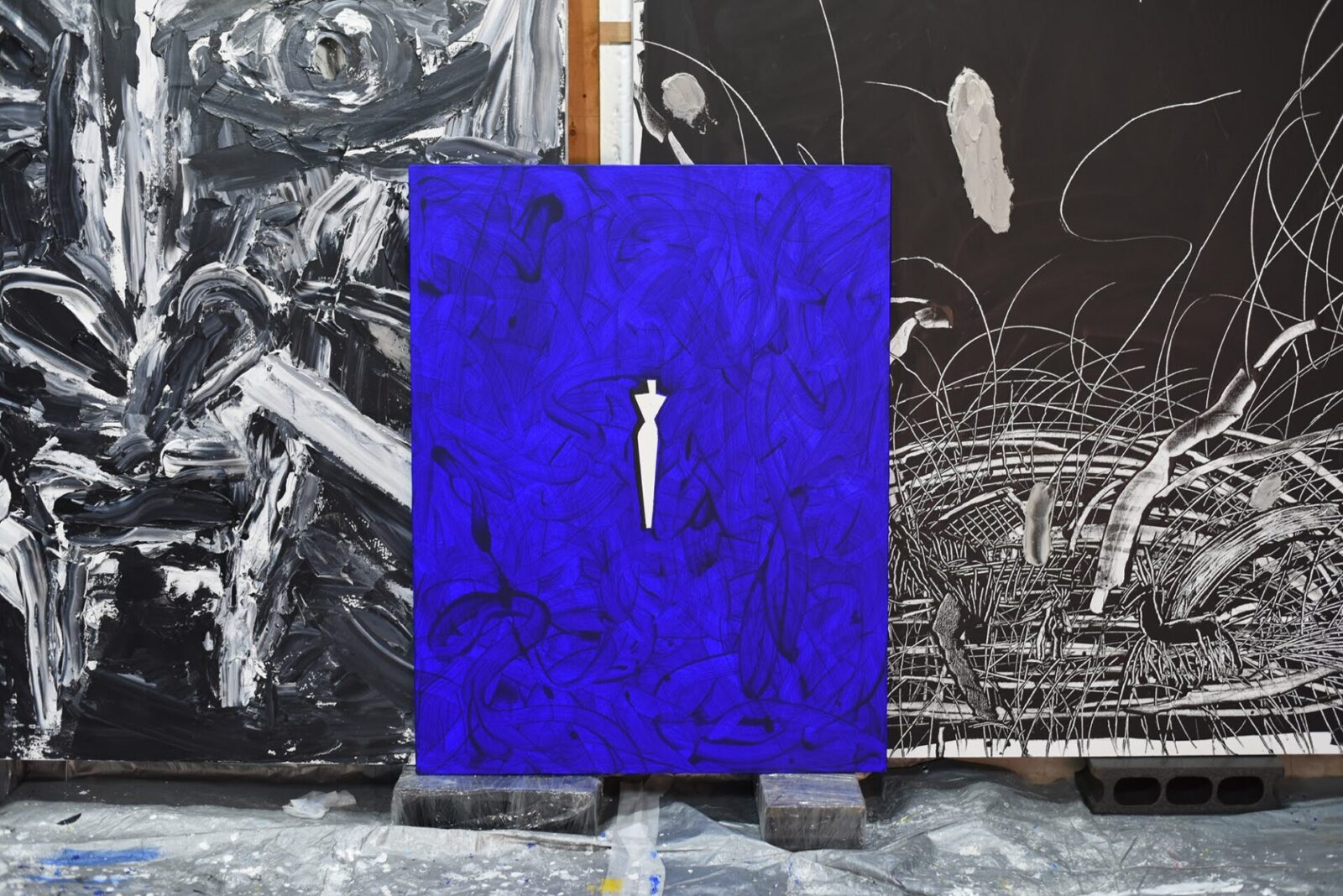
Kuroda works in a wide range of art genres including drawing, sculpture, photography and installation. He has successfully collaborated with leaders in various fields, including architect Tadao Ando, composer Richard Rodgers, and other writers, choreographers, and astrophysicists.
His work in cross-disciplinary creative styles has earned him the French name “Passage,” meaning “man in between” and “man of the passage.”

When looking into the history of Kuroda’s life, the time he spent in cafes played an important role in changing the course of his career.
Encounters and incidents can seem like simple coincidences, but Kuroda declares the importance of such stage settings in life. “Things happen in cafes. This has been true for all of history.”
Take examples such as Picasso and Hemingway, or Sartre and Beauvoir. It is said that culture has been shaped by interactions that occur between people who gather in Parisian cafes. So what is it about Parisian cafes that attracts such life-changing incidents?
We visited Kuroda on the opening day of his exhibit at MORI YU GALLERY in Kyoto, which is also Kuroda’s birthplace, to learn about how he spends his “tea time.”
An adventure-filled upbringing in post-war Kyoto
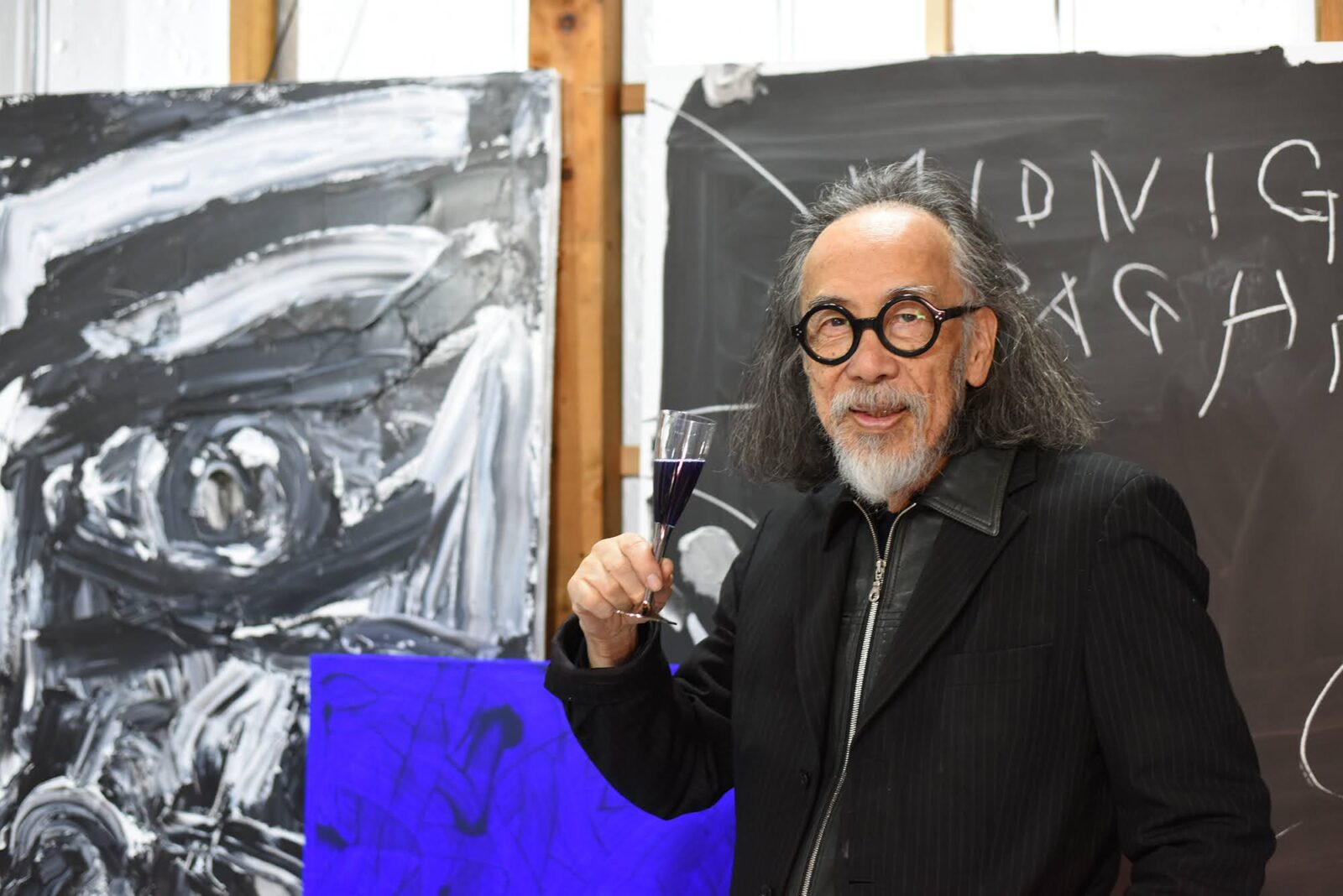
Kuroda was born in Kyoto in 1944, right before the end of World War II.
His grandfather was a kimono merchant who was a patron to artists. His father’s cousin was Shigetaro Kuroda, a Western-style painter. His father was an economist who also enjoyed painting as a hobby.
Kuroda was inspired to paint after his father returned from France and brought home an issue of Minotaure, a surrealist-oriented art magazine.
Minotaure is a creature from Greek mythology with the head of a bull and the body of a man. The cover of the magazine’s first issue featured a painting of the Minotaur by Picasso. Kuroda, who was four-years old at the time, was so struck by its beauty that he immediately began oil painting himself.
“I grew up in post-war Kyoto, where everything had turned to ash and there was no color. Painting was my only escape. I could see Mount Hiei from my bedroom window, and I would spend hours painting in silence there.”
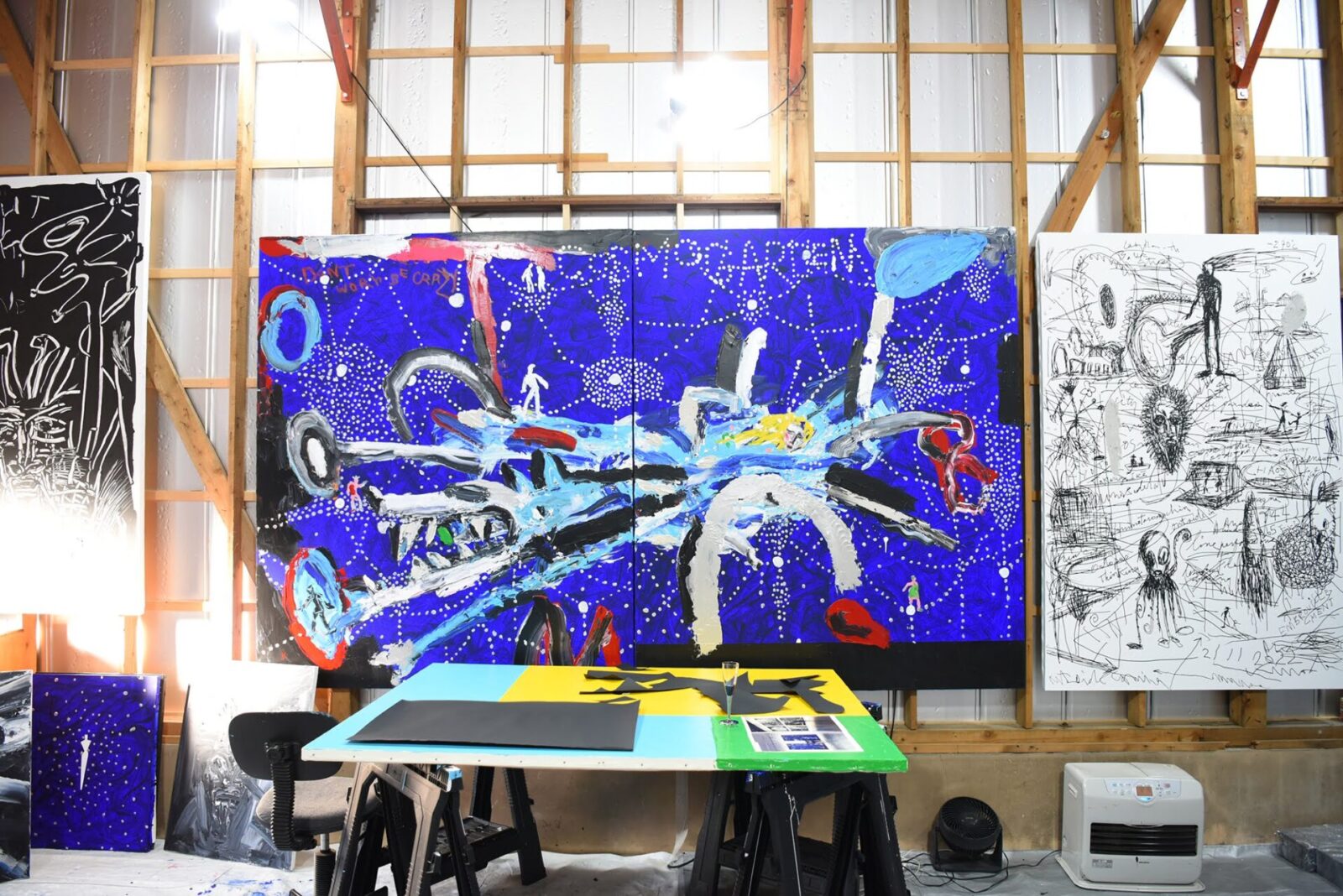
Kuroda was born into a distinguished and artistic family, so he was able to immerse himself in art from a young age. Considering that, one would think his journey to become an artist was smooth sailing, but the truth was far from it.
For Kuroda, the first half of his life was one of aimless exploration.
“I attended a snobbish private elementary school. My friends came from distinguished families such as those of the Higashi Honganji Temple or second sons of the Omotesenke family. However, my home was in a rather rough part of the city so punks of the Kurikaramonmon clan would be fighting just outside my home.”
“I spent my childhood moving between these different worlds. There were many American poets of the Beat Generation in Kyoto at the time, so when I entered middle school and high school, I hung out with them a lot even though I did not speak much English.”
1970, choosing Paris over art school
Kuroda was encouraged to go to art school after graduating high school, but he chose to attend Doshisha University Faculty of Letters instead.
While campus activism was hitting its peak, his interests laid in playing the role of provoking both the protestors and the school. He also vandalized the roof of Kyoto University’s Seibu Auditorium by painting it blue.
The reason he chose to move to Paris in 1970 was not because he had a specific purpose, but because he “grew tired of life in Japan.”
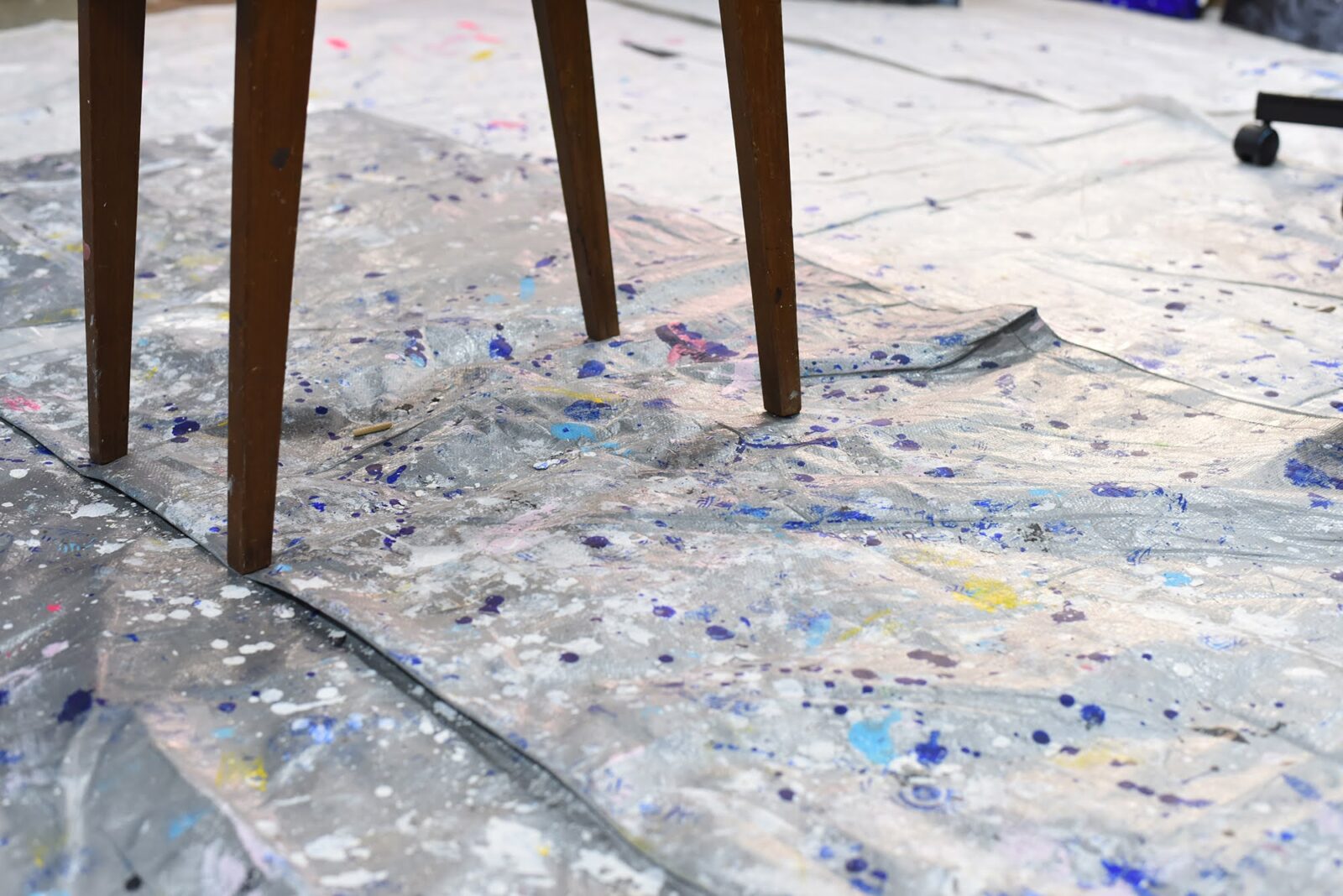
Luckily, he was introduced to a sculptor and began working as an assistant. However, the job did not last long. “The loud clanging noises of sculpting rocks gave me terrible headaches and I was covered in dust everyday. I thought I would lose my mind, so I quit.”
He started hanging out with a group of surrealist artists and became friends with other Japanese artists such as Shusaku Arakawa and Tetsumi Kudo, who would eventually become the leading Japanese artists of their generation.
Due to financial constraints, however, he himself was only capable of drawing small paintings.
His journey to become a true artist had a slow start, and before he realized, eight years had gone by since he had moved to Paris.
A turning point in life at a cafe
Kuroda’s apartment was located in the 15th arrondissement of Paris, a popular residential area in which the Seine river flows through.
There was a cafe on the ground floor of the building across the street from where Kuroda lived, and he would drink a cup of espresso there everyday. This was his “tea time,” and he would sit and watch people walking by on the streets.
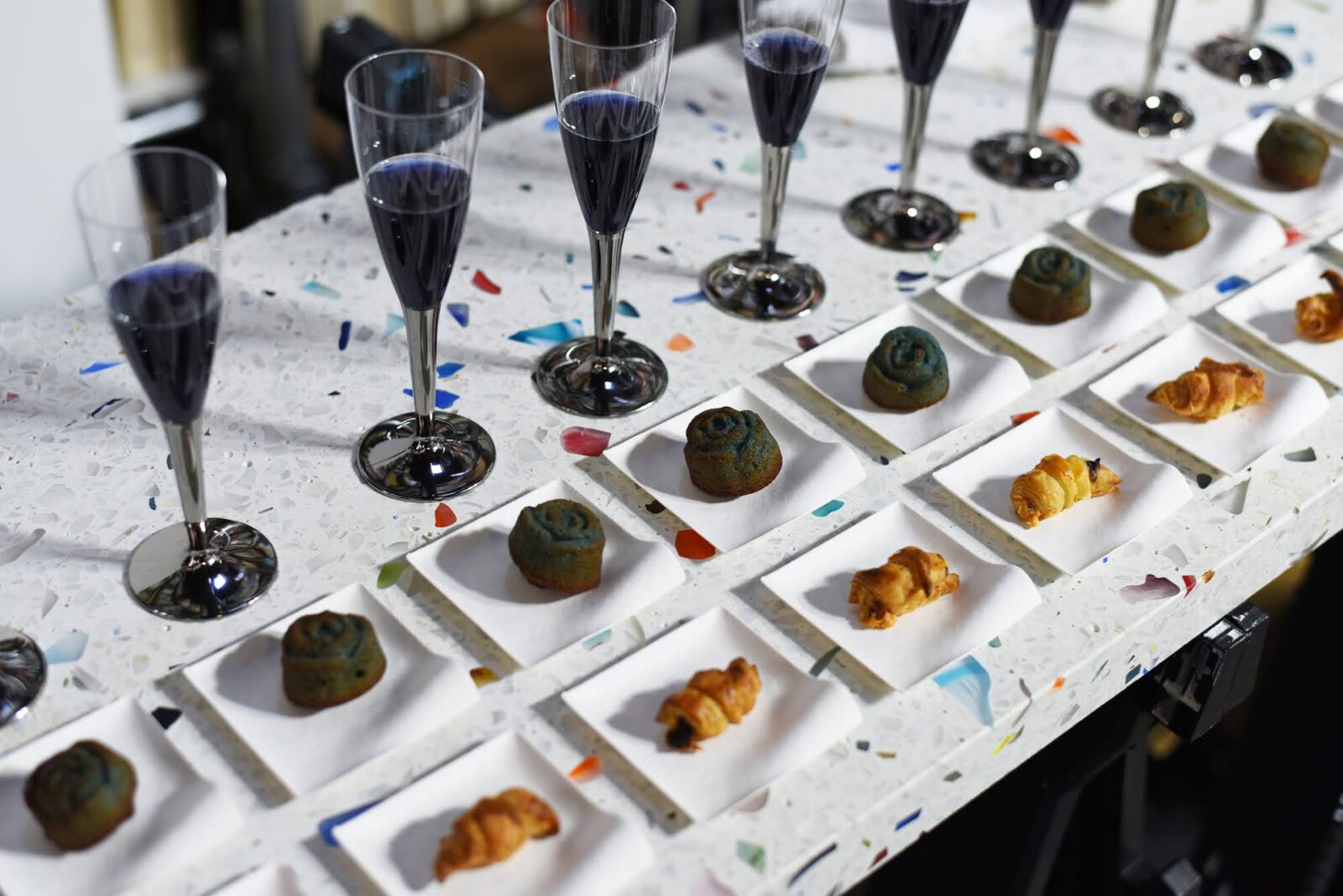
At the time it was common for people who sat near each other at cafes to start up a conversation with each other. There were many artists and people of culture who lived in the district, including philosopher Paul-Michel Foucault.
“I spoke with Foucault about what I thought about his books and he seemed interested in me too, being a Japanese man who had come from a faraway land.”
It was also at this cafe where Kuroda had a chance encounter that changed the course of his career.

As Kuroda was starting to give up on his life in Paris and preparing to move out of his apartment, he was invited to a party by one of the regular customers of the cafe.
“Naturally, people ask what you do for a living at parties, and I told them I paint. Two people at the party said they wanted to see my work. One was a woman who was an art critic and the other was a well known artist Peter Klasen.”
“The art critic encouraged me to open a solo exhibition. That eventually led to my participation in Biennale de Paris the following year and a contract with the Galerie Maeght.”
Another critic who wrote about Kuroda’s solo exhibition was Marguerite Duras, a screenwriter and film director who is known for her works such as “Hiroshima Mon Amour” and “L’Amant.” It was at a different cafe that Kuroda met and became acquainted with her.
While Kuroda endured many years of stagnation as an artist, these chance encounters at cafes kick-started his career.
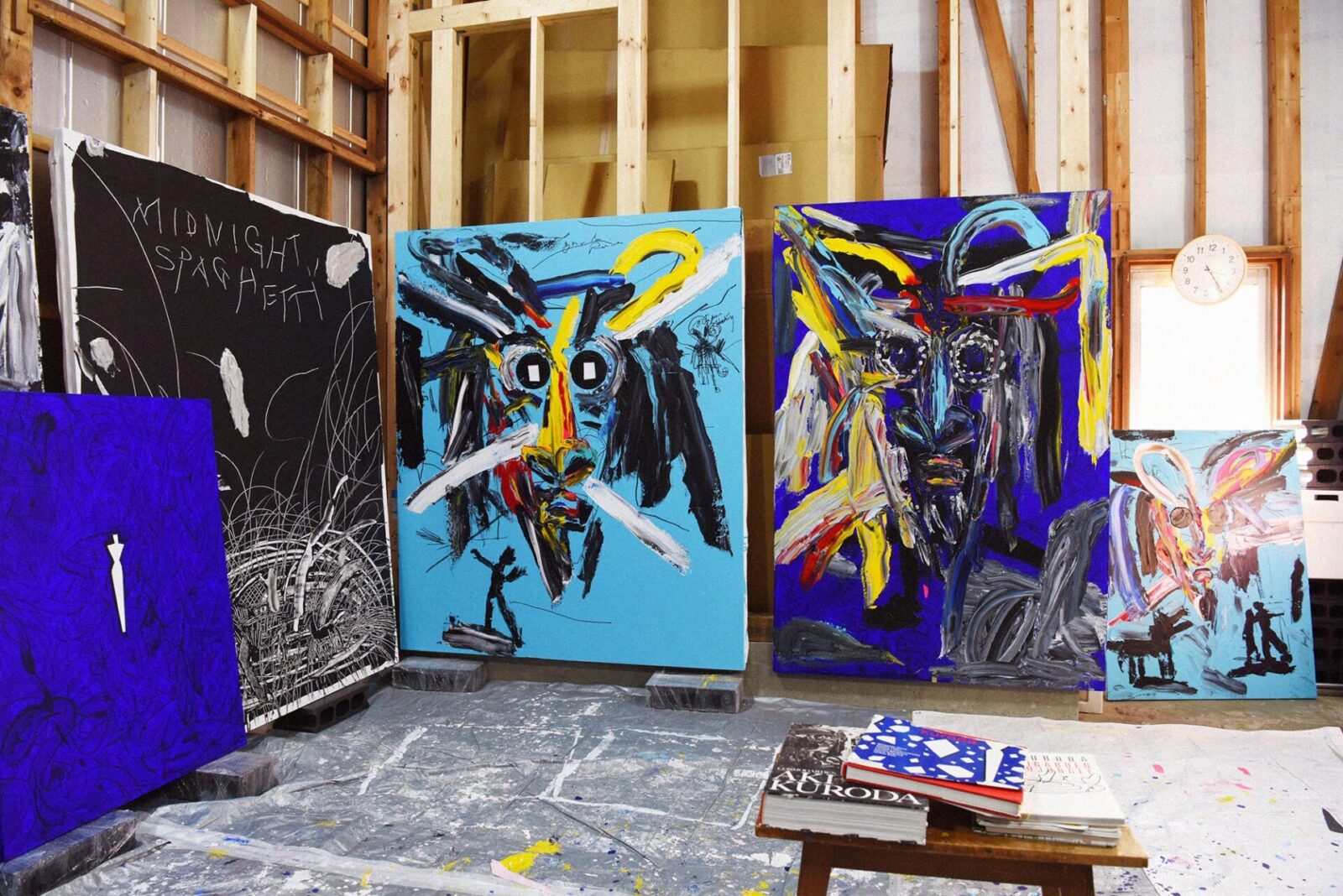
“Why do cafes trigger new movements? That is because cafes are empty spaces in our cities. They are wasteful spaces. But these blank and wasteful spaces allow for chance encounters to occur.”
“When a city becomes filled with only functional and efficient spaces, there will be no room for such incidents and chance encounters to materialize.”
Kuroda also looks back on the importance of his time spent as a “flaneur” or a “loafer.” He says the time he spent aimlessly exploring in his life had a significant meaning and importance.
If cafes in cities are to be defined as “wasteful spaces” that serve no function, then it can also be said that Kuroda’s period of exploration was “wasted time.”
Kuroda does not fear wasted space and time in his life, and perhaps that is why his life is full of chance encounters.
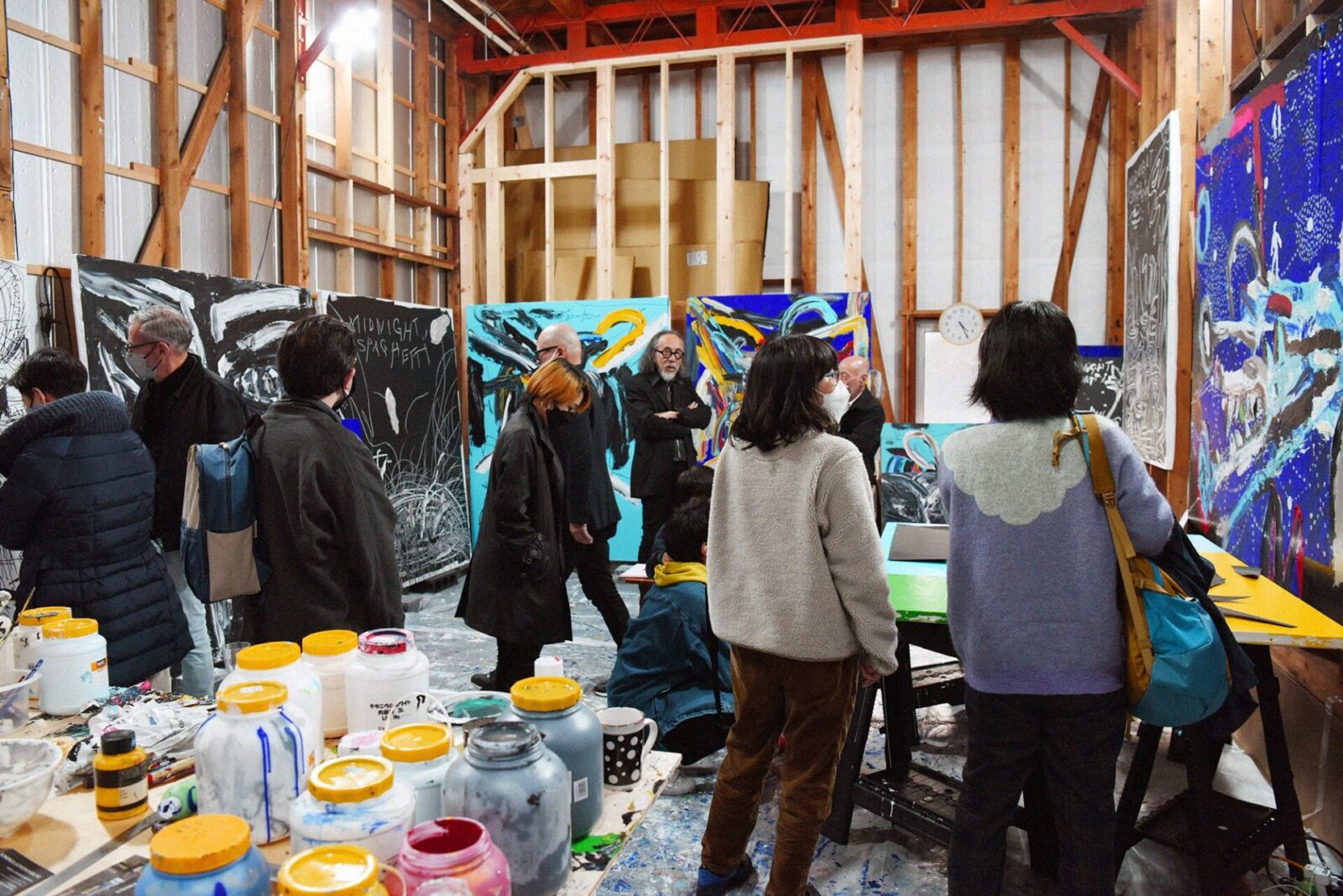
Make noise, create chaos
While Kuroda worked as an artist, he also launched an art and literature magazine in 1985 where he works as the editor-in-chief.
Contributors to his magazine include distinguished persons such as philosophers Jacques Derrida and Michel Serres. The title of his magazine is “NOISE.”
It can be taken literally as its meaning in English, but the title also conveys the nuance of “argument” and “quarrel” in Old French. The magazine aims to create a stir in our current rigid world, as if to provoke a quarrel.
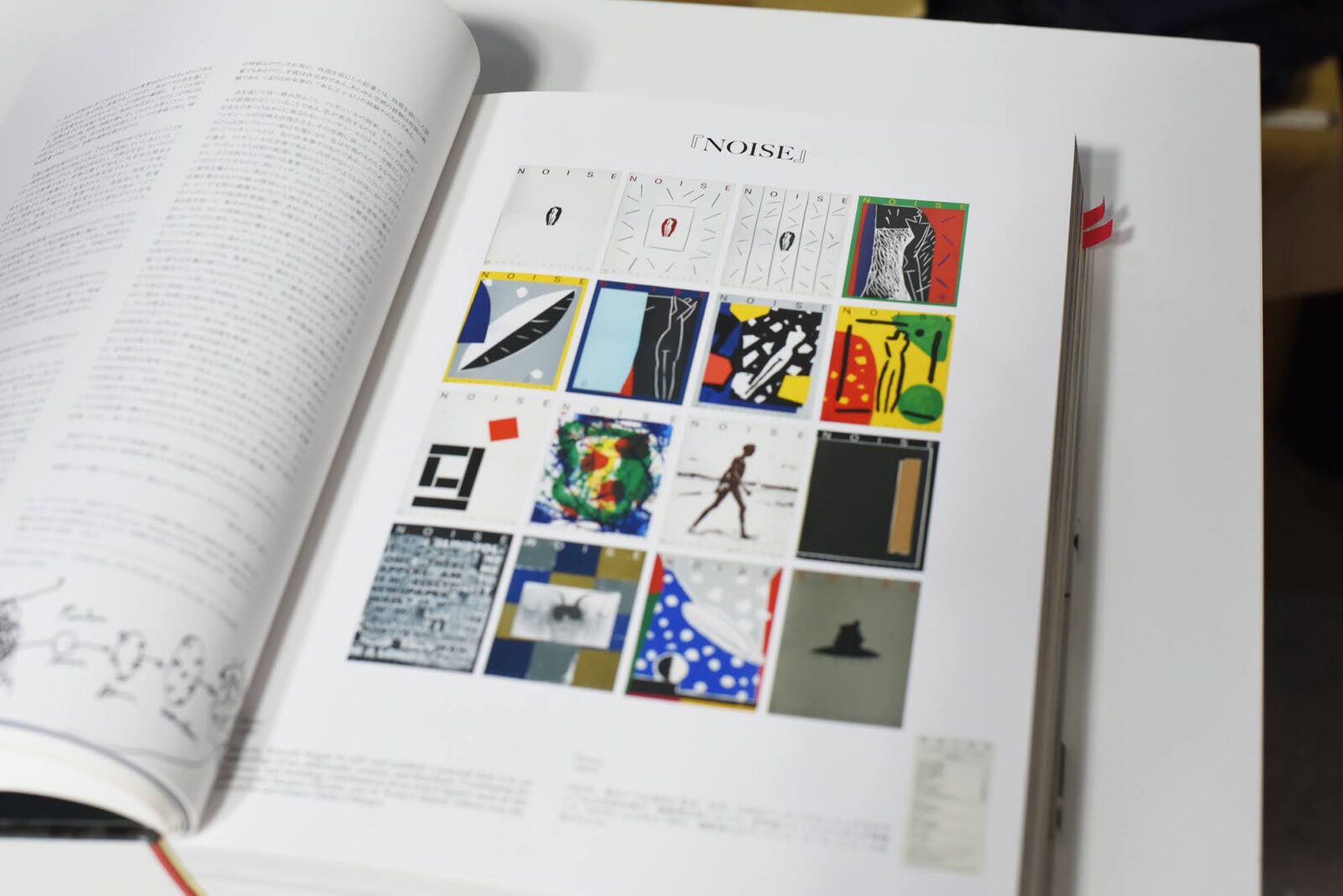
Kuroda believes art plays the same role in society.
“Make noise and create chaos in places that are silent. Art is about finding the treasures that are created in such chaos.”
“For example, there is no noise in the world of tea in Kyoto. They only talk about things such as whether it is proper to enter from your left foot first or your right foot. Anything that strays away from the long established rules are looked down upon. If it was me, I would ask the teacher questions like, ‘What makes the surface of the tea foam when you make tea?’”
“The answer is that it is caused by an element called saponin, but the teachers who are only concerned about the proper rules will not know such things. Make noise and create chaos. That is how we can find new ways of escaping this hard and rigid society and that is what artists are doing all the time.”
Passage: breaking free from a rigid world
Our first interpretation as to why Kuroda is called the “man in between” and “man of the passage” was because he works across various genres of art, but this may have been a rather shallow view.
By making noise in our hardened world and creating chaos, he is showing us the way to escape from it.
Aki Kuroda has spent his lifetime expressing this through his art.
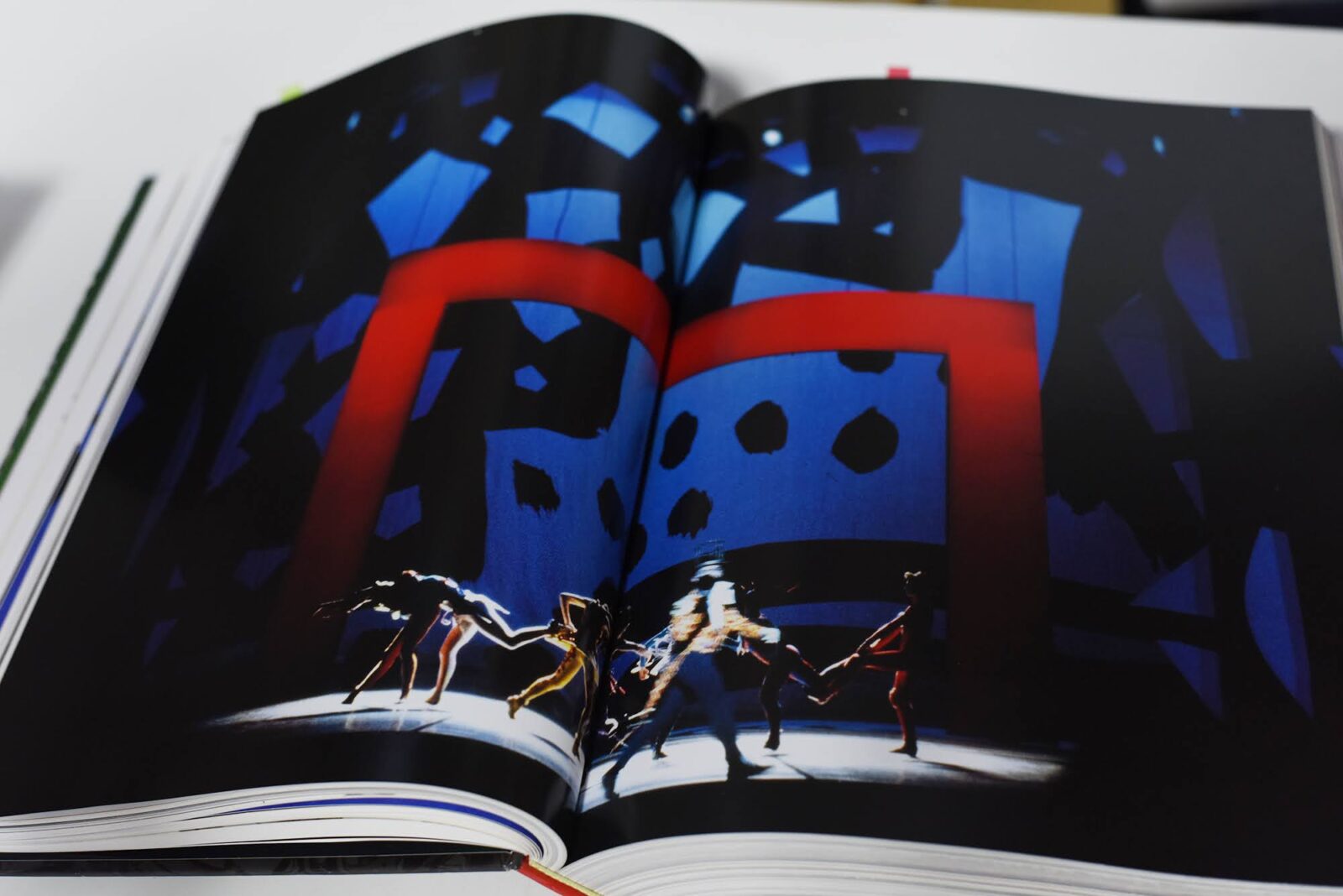
Noise and chaos are generally unwelcomed. It does not provide a straight and smooth path to a goal, but creates detours to uncertain destinations. It is a long way around that may seem pointless.
However, some places can only be reached through such detours.
Kuroda’s art embodies the acceptance of chaos which is conjured through repeatedly going through seemingly pointless processes.
“There are times when I feel like I painted a beautiful piece, but when I look at it again after one night, it looks uninteresting. I keep working on it, but when it still doesn’t work I start to panic.”
“Then another night passes and I start to feel like I can make it work so I pick up my brush again. As I repeat this process over and over, I start to lose my fear of failure. ‘Passage’ or ‘a way out’ is something that can be found beyond fear.”

Kuroda does not give direct answers to our questions throughout the interview.
He seems to purposefully avoid the crux of the matter and his stories slowly spread out and expand like the legs of an octopus.
“My wife always tells me that she can never understand what I am talking about, but I can’t help it. That is the kind of human I am. This is the only way I know how to talk.”
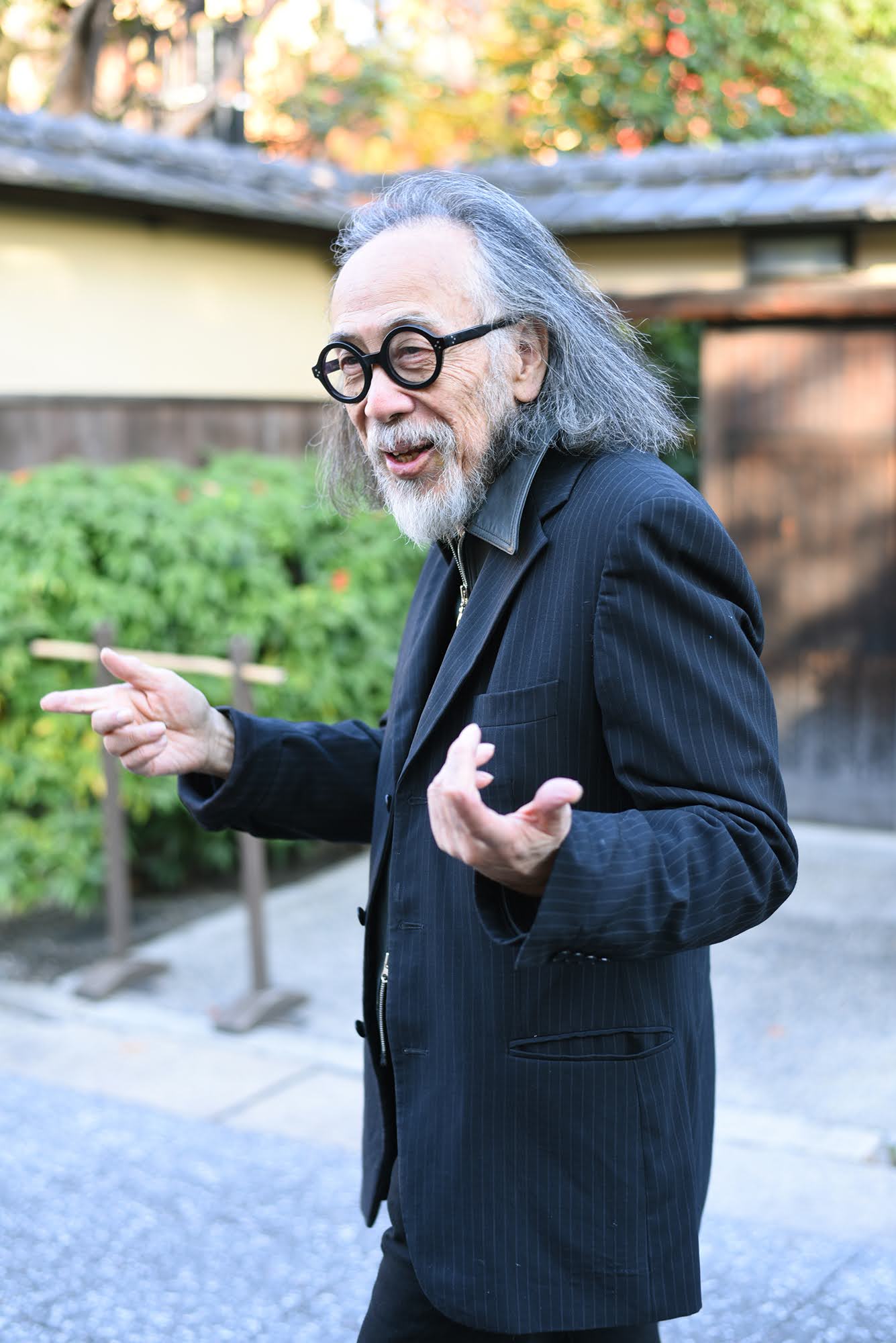
As we spoke to Kuroda, he would smile mischievously.
In our busy daily lives that passes by unaware, his stories were like explorations of their own and they gently jolted our sense of time.
Cooperation: MORI YU GALLERY
Photo: Sayaka Mochizuki
Translation: Sophia Swanson
Editor and creator of the future through words. Former associate editor of Huffington Post Japan. Became independent after working for a publishing company and overseas news media. Assists in communications for corporates and various projects. Born in Gifu, loves cats.
